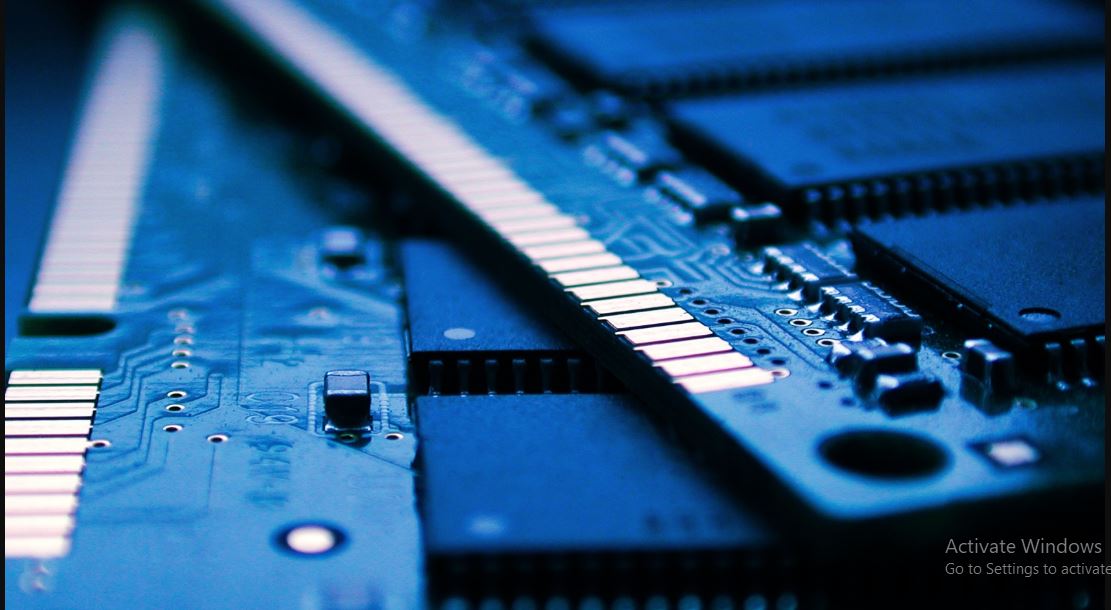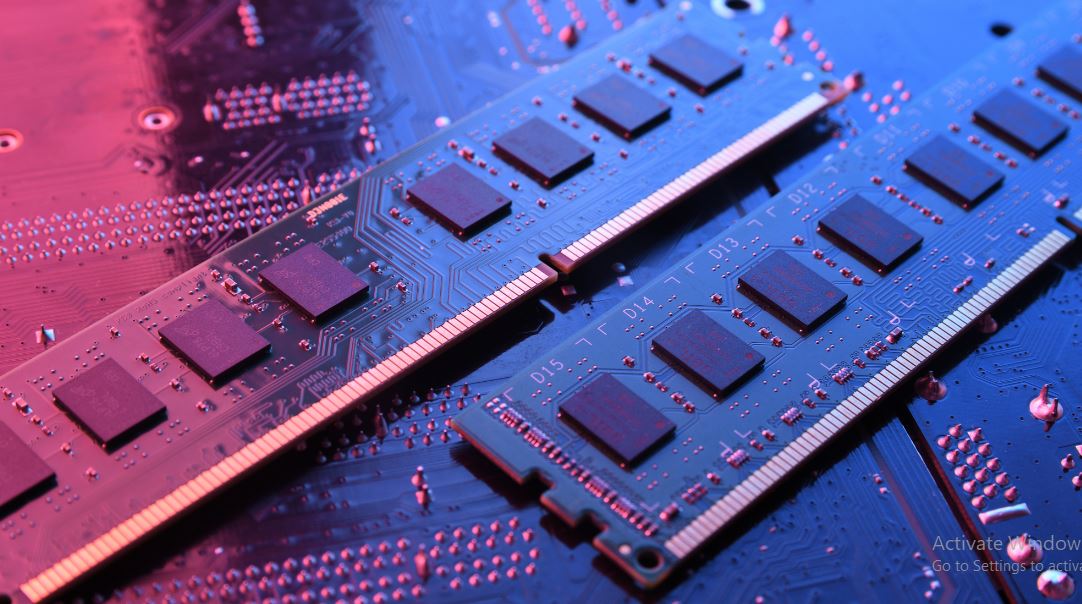If you are a heavy computer user, like a gamer or designer, you must be familiar with RAM and VRAM terminologies. RAM and VRAM are the components responsible for your PC’s memory storage. These two components serve almost the same purpose but are not exactly the same. I am sure you are wondering: RAM vs VRAM: what is the difference?
RAM is the memory of a computer. It stores and processes the results of your tasks. It also helps speed up your computing operations. VRAM is video random memory storage that optimises your graphics card’s performance for a great visual display.
VRAM and RAM are similar in that they are both memory storage devices. However, they do not actually do the same thing. Still, in order to enjoy your computer’s performance, you need both RAM and VRAM. We will explain RAM vs VRAM’s differences and similarities.
What Is Ram?
RAM is an acronym for random access memory. A type of computer memory that stores data that your computer’s CPU needs to access immediately. Your RAM provides a fast and temporary storage solution by reading and writing data. This data is very essential for the smooth operation of applications and your computer’s overall performance.
Unlike an external storage device like a hard drive. RAM does not store data permanently. It is very volatile, and turning off your computer will erase all the data you are processing or have processed. This means you lose all your memories when you turn off or restart your computer.
The operating system and software applications on your computer process all the data in your RAM. It allows faster data access than when fetching from a slower storage device. The more capacity your PC has, the faster speed you will experience. Ram is very crucial to your computer. Without it, your CPU cannot access the data it needs to process your tasks.

What Is VRAM?
VRAM stands for video random access memory. It is a unique type of memory that the graphics processing units and their graphics hardware use to store visual data. VRAM is very important for processing the visual data necessary to display your monitor’s images, videos, and other graphics-intensive content.
VRAM is specifically designed to handle all graphics rendering demands. It stores frame buffers, textures, and other data you need for generating images and videos in real life. VRAM has the very high processing speed you need for smooth and responsive graphics performance. These include applications like video games, 3D modelling, video editing, and more.
VRAM can affect your GPU’s performance, especially when working with high-resolution displays, complex 3D scenes, and multiple displays. The more VRAM capacity there is, the more graphical data it can store. So, VRAM is used in graphics hardware to store visual data and plays a huge role in delivering high-quality graphics performance.
What Is The Difference Between Ram And Vram?
Ram and VRAM serve different purposes in a computer system, but they are both types of memory storage. Here are the differences between RAM and VRAM:
-
Function:
- Regular system RAM is used to store data that the CPU and software applications need to access quickly. It contains information that the operating system and running processes are actively using. RAM is essential for general computing tasks and multitasking.
- VRAM is a specialised type of memory that graphics cards and GPUs use to store visual data needed for rendering images and videos on a computer monitor or display.
It is specifically optimised for handling graphics-related tasks, such as rendering textures, frame buffers, and other graphical elements.
-
Usage:
- RAM is used to store a wide range of data, including the operating system, applications, documents, and more. Its purpose is to provide the CPU with quick access to data that is currently in use.
- VRAM is dedicated to storing graphical data exclusively. It holds information like textures, shaders, and rendering buffers. These details are crucial for delivering high-quality graphics performance in applications like games and multimedia content creation.
-
Access Speed And Bandwidth:
- The primary focus of system RAM is to support general computing tasks and data storage for the CPU. It is fast but has a relatively lower bandwidth compared to VRAM.
- VRAM is designed to have higher bandwidth and faster access times than regular RAM. This is necessary for quickly feeding the graphics processing pipeline with the large amounts of data required for real-time rendering.
-
Volatile vs. Non-Volatile:
- System RAM is volatile memory, meaning its contents are lost when the computer is powered off or restarted.
- VRAM is also volatile memory, similar to system RAM, and its contents are lost when the computer loses power.
-
Usage Scenarios:
- RAM is used for general computing tasks like running applications and managing the operating system. It also acts as a storage device for temporary data while programs run.
- VRAM is used specifically for graphics-related tasks such as gaming, video playback, 3D modelling, and other visually intensive applications.
Although both RAM and VRAM are types of memory, they have distinct roles within a computer system. RAM serves as general-purpose memory for the CPU and applications, while VRAM is specialised memory for graphics processing and is used by graphics cards to handle visual data for display on a monitor or screen
Can I Replace Ram With Vram?
You cannot replace your system RAM with VRAM or vice versa because they serve different purposes and are designed for specific functions within a computer system. The computer’s CPU and software programs use RAM to store data that is currently in use.
It provides quick access to data for general computing tasks and multitasking. It also holds the operating system, applications, and other data needed for the computer’s normal functioning.
However, VRAM specialises in storing memory used by graphics cards and GPUs. It is necessary for processing graphical data for computer display. Trying to replace system RAM with VRAM or vice versa would result in your PC not functioning properly.
RAM is essential for the overall operation of the computer. Replacing it with VRAM would not provide the necessary functionality for your operating system. The same thing happens when you replace VRAM with RAM.
RAM and VRAM are different types of memory with different roles and functionalities in a computer system. They cannot be directly interchanged or replaced with each other.
What Are The Similarities Between Ram And Vram?
While RAM and VRAM serve different purposes in a computer system, they do share some similarities due to their nature as types of memory. These similarities include the following:
- Both RAM and VRAM are types of volatile memory. This means that their contents are lost when the computer is powered off or restarted. They are used to temporarily store data that needs to be accessed quickly while the computer is running.
- RAM and VRAM are “random access” memory types. this means that their data can be read from or written to any location within the memory at roughly the same speed.
- RAM and VRAM both offer faster data access than traditional storage devices like hard drives or SSDs. This fast access is essential for providing quick data transfers to and from the CPU or GPU for processing.
- Both types of memory are used for temporarily storing data. While RAM stores data used by the CPU and applications, VRAM stores visual data used by the GPU for rendering images and videos.
- Both memory storages are integrated into modules or chips directly mounted on the computer’s motherboard (for RAM) or on the graphics card (for VRAM).
- Both types of memory contribute to overall system performance. Adequate RAM allows for smoother multitasking and application performance, while sufficient VRAM enables better graphics rendering and smoother gameplay in graphics-intensive applications.
- In many cases, both system RAM and VRAM can be upgraded, allowing you to improve your computer’s performance by adding more memory capacity.
Despite these similarities, it’s important to note that RAM and VRAM have distinct functions within a computer system, and they cannot be used interchangeably due to their specialised roles.

Frequently Asked Questions
What Is The Role Of Ram And Vram In Gaming?
RAM and VRAM play crucial roles in gaming. RAM is responsible for storing game data and running processes. It enables smooth multitasking and efficient game loading. Conversely, the graphics card uses VRAM specifically to store textures, shaders, and frame buffers.
Can Increasing The Amount Of RAM Improve Gaming Performance?
Yes, increasing the amount of system RAM can improve gaming performance. More RAM allows the computer to store more data from games and applications, reducing the need to constantly access slower storage devices.
Is VRAM More Important Than System RAM For Gaming?
VRAM and RAM are both important for gaming but serve different roles. VRAM is particularly critical for gaming at higher resolutions, using complex textures, and rendering detailed graphics. RAM is essential for running the game and managing background tasks.
Can I Allocate System RAM As VRAM To Improve Graphics Performance?
No, you cannot allocate RAM for VRAM usage to improve graphics performance. They serve different purposes, even though they are both memory spaces.
Conclusion
RAM vs VRAM are two different types of memory capacity, but both are essential for your computer’s performance. Ram supports general computing tasks, while VRAM supports graphics processing. They both offer fast access speeds but for different purposes.
Although RAM and VRAM have some similarities, they cannot be interchanged. They serve different purposes, and a balanced combination is important for an excellent computer experience. Ram vs. VRAM is an interesting topic, and this article has explained all you need to know.
